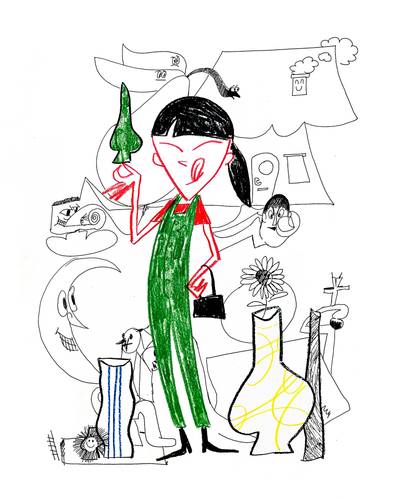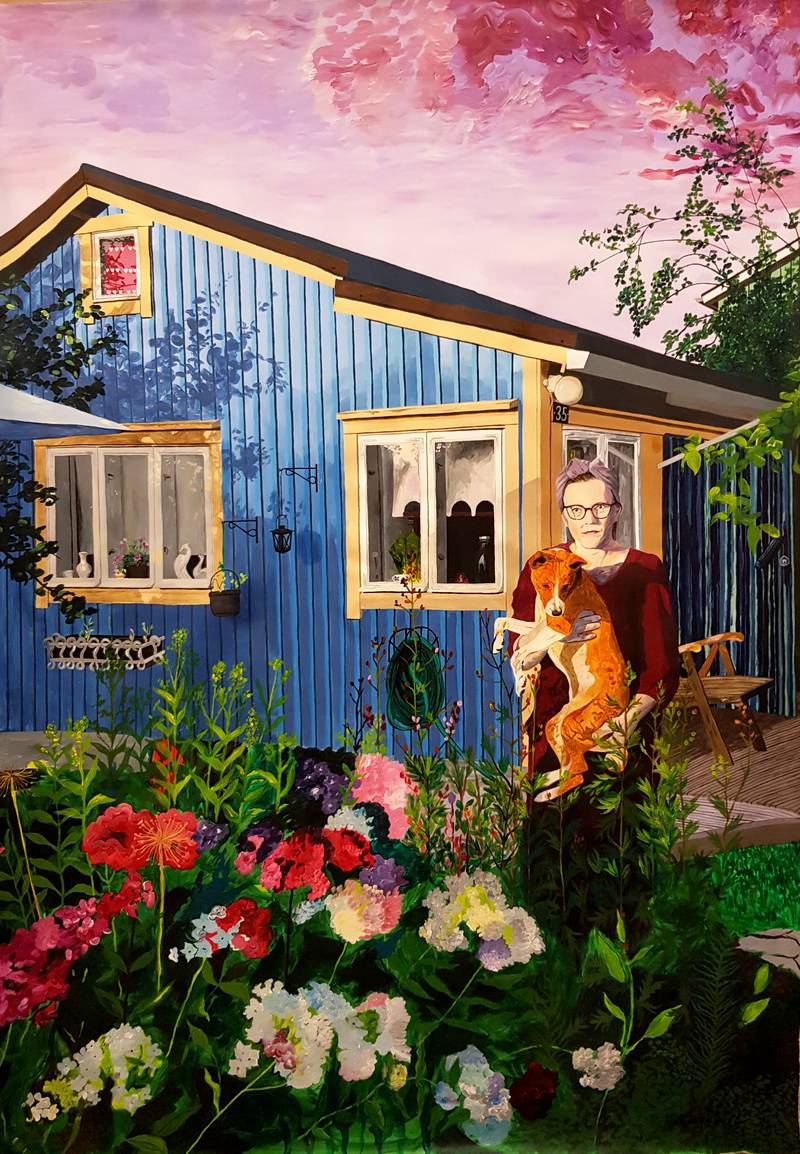

Viivi Koljonen is an art historian from Helsinki and an Italian translator. She is currently the Deputy Executive Director of Galleria Huuto.
In April, at Sanni Seppä’s exhibition “Pictures Do Not Tell”, I watched visitors spending exceptionally long times discussing in front of their paintings. At the same time, I knew that the artist’s idea was for this to be their last exhibition. I ask Sanni about their art and is it the case that we won’t see their works anymore.


Sanni Seppä’s portrait by Elliina Peltoniemi
VIIVI: Sanni, your show had childhood pictures of your moments with your sister and a series of Happy Self-Portraits. The works are figurative, depicting everyday moments, but what do they not tell?
SANNI: The images are familiar, quotidian and easily accessible. They do not say that there is violence in the background. Only the exhibition text reveals it. I think those pieces without text would be the most useless and boring. Wouldn’t it be the most boring thing to copy your childhood images while painting? A lovely picture is not enough for me.
Interesting. I do not see it that way. I’m in the same age group as you are, and these works can have nostalgia for those who spent their childhood in the 1980s. However, these works have content in and of themselves, such as three-dimensional form and atmosphere, and they raise questions about whose images these are, what the landscape is, and where these children fit in.
It’s difficult for me to imagine how my work would appear to others. Now that you say, there are elements that one can identify with, and they are not exact imitations but combinations of many images. I like that a drawing or painting is not two-dimensional. I have previously made three-dimensional wall-mounted paper sculptures with coloured pencils.
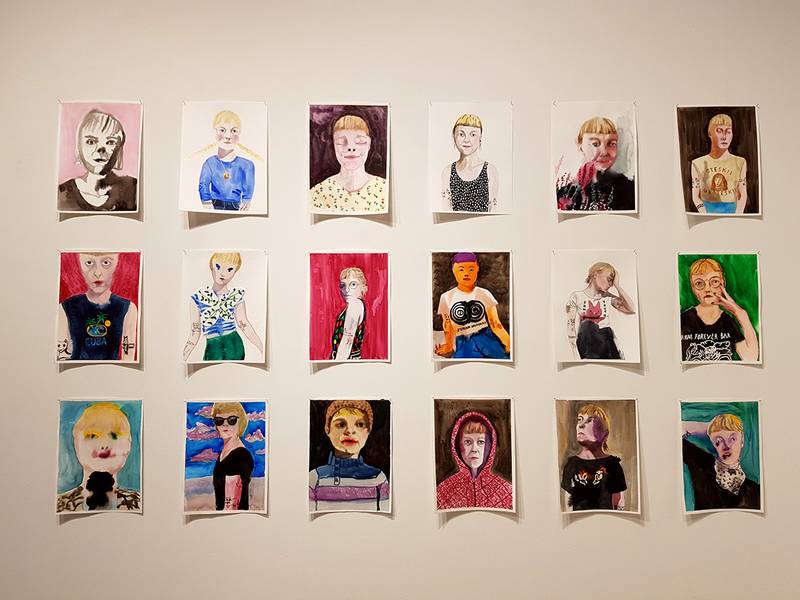

Artworks from the exhibition ‘Pictures Do Not Tell’, courtesy of Sanni Seppä
I had thought you were primarily a painter, but you used to be a drawer.
I was a drawer originally. I made wall-sized coloured pencil drawings and installations. Unfortunately, the body came up against me, and I could no longer continue due to physical pain. I liked that craft: glueing and cutting with a carpet knife. I had to do grief work when giving up drawing, forcing me to become a painter. Now I realise I’m a painter, and I’ve found confidence. I only discovered watercolours recently with the self-portrait series, and I love them. However, acrylic and watercolour are gentler on the body. I’m glad I found something new. The large, 3m x 2.5m wood-coloured drawings were slow to work with, and there were no surprises. Instead, with watercolours, I never know what the result will be. I always have a starting idea, but still, the result is different than I thought. The result does not have to be perfect; it is enough that it comes from there.
In addition to the small childhood pictures, you had two big fabrics in the show, one of which you had painted yourself in the bathroom and the other one of your sister in front of her allotment cottage. I found them humorous. What do you think of yourself?
We had been torn apart into two opposite walls. I felt that the alignment also highlighted our differences. For example, I am more open and visible, and I have no secrets. Usually, I paint small, but these are big. If you talk about painters, I feel like you should ask if you’re a painter of small or large scale.
Yes, painting big is also a question of resources.
Yes. You have to have time and set aside materials and space. On the other hand, I did a big painting much faster than coloured pencil work.
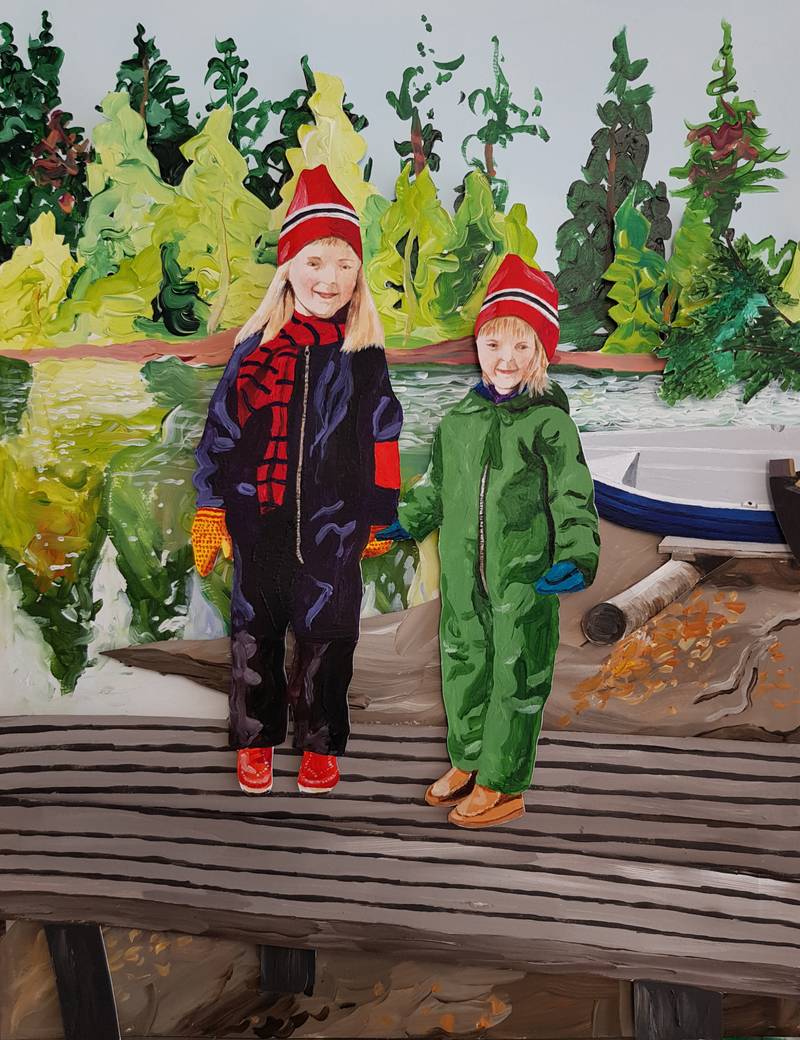

Artwork from the exhibition ‘Pictures Do Not Tell’, courtesy of Sanni Seppä
Your happy self-portraits invite many reflections. For example, many artists began to draw themselves during the pandemic as other models were absent, and the period called for self-reflection. On the other hand, one thinks of the present selfie culture when watching them. As an art historian, it also comes to my mind how in history, many people outside of current canons (which were often occupied by wealthy white males) have been able to define themselves and how they are seen by doing it themselves. What thoughts do you have about these self-portraits?
I love them! When I did them, I noticed that the happier I was, the more distressing the picture became – but after each picture, I felt great bliss. Painting as an act is so essential to my well-being. I’ve been thinking about selfie culture because I live in that world. Painting selfies can be done quickly, but it is always slower than making a photo. And how much can you get out of such a boring thing as your face? After my previous exhibition, I thought this series of works was ready, and I couldn’t add anything new to it anymore. A few months later, when movement was restricted, creativity took on a new leap. I want to challenge my creativity by limiting it. The more you explore one thing, the wider it opens up.
So it’s a motion?
Of course, the feeling of movement has to be there. If it stops, then work stops. But I do also wonder who wants my face on their wall.
People have loads of unknown people’s portraits on their walls.
True, I have seven unknown people on my own home’s wall right now.
Speaking of home, you’ve done a year-long painting project where you photographed your home’s artefacts. What was the significance of the work, and how political do you feel the project was?
I am a home person and a visual person. In that series, what was important was too limited, that is, what could be found inside the walls of the house. I walked around my home and wondered what would work as a painting. In the end, I lived as if inside a piece of art. The first and last painting in the series was of my home from the outside, with a façade renovation in between. I photographed everything autobiographically: everyday objects, plants, partners, and animals. Of course, everything personal is political. In addition, being part of a sexual and gender minority means that whatever I do is always political.
The exhibition doesn’t imply that this is your last exhibition, at least for now. Why?
I won’t stop making art, but I want to do something else next. I am tired of always having to find the funding myself, and the venues are starting to repeat themselves. I don’t want fame, but I feel like I’m not moving forward. While making art is wonderful, I still want it to interact with viewers. But I get that from Instagram. I might also get a more diverse audience there than in galleries. It is also a place where there is no need to pay rent.
I graduated as a personal trainer, teaching queer yoga once a week. I’m still on a grant, so I can only hold a few clients so far. In my new job, I focus on body positivity, oppose weight loss, and intervene in fatphobic behaviour if it occurs. Encountering me is a sensitive and safe space for sexual and gender minorities. I experience minority stress, and I don’t go to places and do things because I am too tired to claim the items that binary people have.
I won’t stop making art, but I want to do something else next. I am tired of always having to find the funding myself, and the venues are starting to repeat themselves. I don’t want fame, but I feel like I’m not moving forward. While making art is wonderful, I still want it to interact with viewers. But I get that from Instagram. I might also get a more diverse audience there than in galleries. It is also a place where there is no need to pay rent.
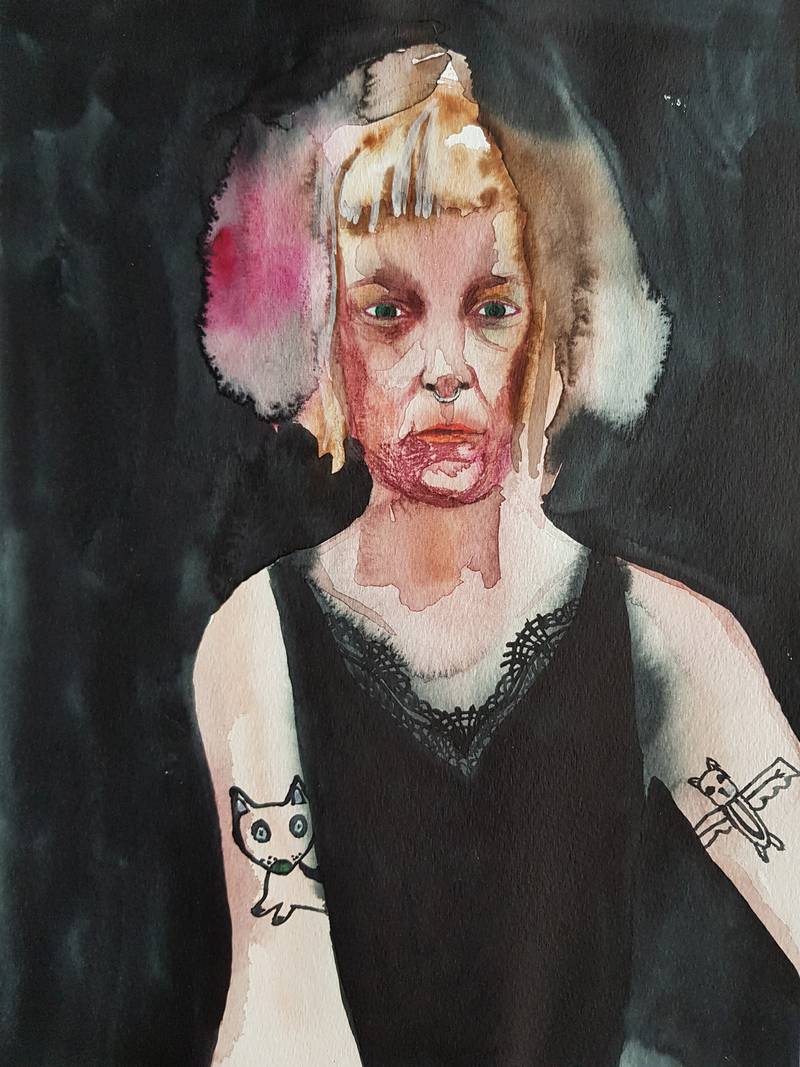

Artwork from the exhibition ‘Pictures Do Not Tell’, courtesy of Sanni Seppä


Artwork from the exhibition ‘Pictures Do Not Tell’, courtesy of Sanni Seppä
Thank you, Sanni, for your time! I want to wish you all the luck with your new career. Want to say something else at the end of the interview?
Perhaps only that nothing is worth maintaining toxic relationships or to considering what others are saying, just do your own thing.


